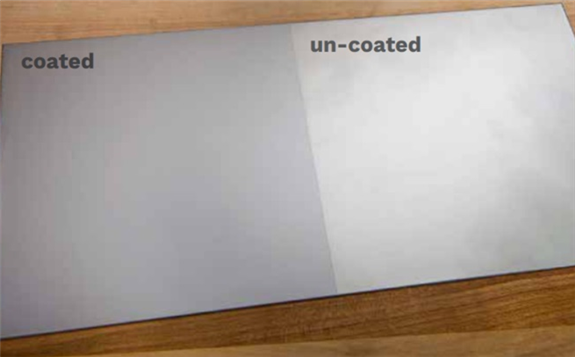 A metal plate, half of which has been coated with QuarTec (Image: Framatome)
A metal plate, half of which has been coated with QuarTec (Image: Framatome)
The company said its QuarTec permanently adhered hydrophobic coatings minimise the adherence of radiological contaminants to the surface of components and equipment, while also reducing the accumulation of aquatic growth, common in underwater environments, without affecting plant chemistry systems. The new coatings, it says, will reduce the use of toxic agents.
Framatome says its "innovative chemical technologies multiply the inherent resistance of quartz, expanding the historical spectrum of protection. QuarTec protects against a comprehensive range of damaging environmental factors at the nanoscale, filling microscopic pits and voids and offering superior profile coverage."
The advanced quartz hydrophobic coatings have been approved for use in plants across the energy sector, including in nuclear power plants, and it makes the components and equipment easier to maintain and less costly to clean, the company said.
The QuarTec coatings were tested during the spring 2018 outage in an undisclosed operating nuclear power plant in the USA. Framatome said it received confirmation of the coatings' capabilities through third-party validations over the past three years.
Framatome recently signed a contract with US utility Dominion Energy to complete the industry's first application of the QuarTec solution to address biofouling concerns associated with the emergency service water pump at the Surry plant. This pump provides cooling water from the James River to essential plant heat exchangers. The coated pump was placed in service at Surry in early 2019, with additional service water components currently being coated to address aquatic growth issues.
"Recognising industry needs, our Framatome team researches and develops new technologies that help our customers save time and money," said Catherine Cornand, senior executive vice president of the Installed Base Business Unit at Framatome. "With QuarTec, Framatome brings an important innovation to the market. We are resolute in our mission to help operators improve the efficiency of their assets and reduce maintenance costs while ensuring the highest level of safety."